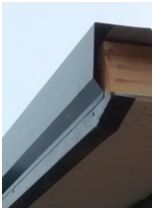Thin Hair and a Flat Forehead
In my most recent past life (a.k.a the 1990’s) I was a post frame (pole) building contractor based in Spokane, Washington. At one time we had as many as 35 crews constructing buildings in six states. Even though I jokingly tell people this is why my hair is thin and my forehead is flat, we did have some seriously good subcontract erection crews.
Similar to the old 80/20 rule adage, 10% of the crews made 90% of the mistakes. It wasn’t them being bad people, and they did generally care – they would spend all day trying to correct (or making worse) a problem with a few minute fix.
In past years when our clients would call for Technical Support they would say things like, “You won’t believe what I have done. It is the worst problem ever. I am sure you have never heard of this one.”
I’d frankly explain my construction history and let them know, if a mistake could possibly have been made, one of my crews did it. Now let’s solve your problem.
I have yet to meet a challenge which did not have a solution, and often a remarkably simple one.
I will readily admit what we refer to as four and eight buildings (single trusses every four feet, sidewall columns every eight feet) have never been my favorites. Other than some structural challenges to make them work, they are relatively simplistic. However they also have some limitations not found where trusses bear directly upon the columns.
In today’s Technical Support lesson:
From the client:
 “I have not installed the rake /corner trim on the gable ends yet, but I did try a dry fit. My initial impression is that the lower varge “L” trim is too narrow for the rake/corner trim to cover properly. It MIGHT, at best cover by a 1/4 inch but the stitch screw will not catch both the rake/corner trim and lower varge rafter trim. See attached picture.
“I have not installed the rake /corner trim on the gable ends yet, but I did try a dry fit. My initial impression is that the lower varge “L” trim is too narrow for the rake/corner trim to cover properly. It MIGHT, at best cover by a 1/4 inch but the stitch screw will not catch both the rake/corner trim and lower varge rafter trim. See attached picture.
If I had followed the drawing regarding the siding nailers/soffit support for the end rafter it would have been in the wrong place. Because I have the single truss system the end rafter is not dropped 5 1/2 inches for the purlins to go over the top for the varge rafter. Therefore the nailer/soffit support had to be dropped several inches to provide a level mounting of the soffit.”
And the sad answer:
“Detail 9/S-4 of your plans shows the purlins laying flat over the top of the end truss, and butting into the inside of the varge rafter. The plans do not suggest the end truss be lowered at all. Had the varge rafter been properly placed, the soffit support would have been perfectly located and the lower varge/rake trims would have fit as anticipated.”
All of the trims were designed to cover the 2×6 varge rafter and the edge of the soffit. Adding in another 1-1/2” for the thickness of the roof purlins over the top stretches things.
In the end, nothing which can’t be covered, it is what trim is for!






